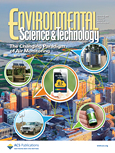Migration and opportunistic feeding increase PCB accumulation in arctic seabirds
Migration and opportunistic feeding increase PCB accumulation in arctic seabirds
 Polychlorinated biphenyls (POPs) are resistant towards common degradation pathways and accumulate, because of their lipophilicity, in organisms' fatty tissues. In addition, the transfer of POPs in a foodweb typically results in elevated POP concentrations at the highest trophic levels (i.e. biomagnification). Previous modeling efforts hence focused on the importance of an organism's trophic level and the lipophilicity of the chemical as predictors for the organism's POP body concentration. However, field studies have not only demonstrated that Arctic seabirds, as top predators, have elevated POP body concentrations compared to their environment, but also that POP body concentrations can differ substantially between species that occupy similar trophic levels.
Polychlorinated biphenyls (POPs) are resistant towards common degradation pathways and accumulate, because of their lipophilicity, in organisms' fatty tissues. In addition, the transfer of POPs in a foodweb typically results in elevated POP concentrations at the highest trophic levels (i.e. biomagnification). Previous modeling efforts hence focused on the importance of an organism's trophic level and the lipophilicity of the chemical as predictors for the organism's POP body concentration. However, field studies have not only demonstrated that Arctic seabirds, as top predators, have elevated POP body concentrations compared to their environment, but also that POP body concentrations can differ substantially between species that occupy similar trophic levels.
In this paper we demonstrated that differences in polychlorinated biphenyl (PCB) body concentration between species of Arctic seabirds breeding in the Barents Sea can, next to the organism's trophic level and the chemical's lipophilicity, be explained by differences in migration strategies and by the occasional opportunistic feeding habits of some species. Migration causes higher PCB body concentrations in species that migrate in winter to more contaminated areas along the American east coast. Because of the temporal higher dietary PCB concentrations in food items they have higher body concentrations than what could be expected based on the organism?s trophic level. Opportunistic feeding comprises the occasionally uptake of feed items from higher trophic levels and associated higher PCB concentrations.
Scientific abstract
It is widely accepted that body concentrations of persistent organic pollutants (POPs) tend to increase with trophic level (TL). Yet, little attention has been paid to the causes in the underlying differences in POP body concentrations between species occupying similar TLs. In this paper we use two modeling approaches to quantify the importance of migration and opportunistic feeding, relative to that of trophic level, in explaining interspecific differences in polychlorinated biphenyl (PCB) body concentrations between 6 Arctic seabird species breeding in the Barents Sea: Little Auk (Alle alle), Black Guillemot (Cepphus grylle), Brünnich's Guillemot (Uria lomvia), Common Eider (Somateria mollissima), Black-legged Kittiwake (Rissa tridactyla), and Glaucous Gull (Larus hyperboreus). As a first approach, we use additive models to analyze two independent data sets (n = 470 and n = 726). We demonstrate that migration, opportunistic feeding, and TL significantly (p < 0.001) increase PCB body concentrations by a factor 3.61–4.10, 2.66–20.95, and 2.38–2.41, respectively. Our second approach, using a mechanistic bioaccumulation model, confirmed these positive effects on the body burdens but suggested lower effects of migration, opportunistic feeding, and TL (1.55, 2.39, and 2.38) than did our statistical analysis. These two independent approaches demonstrate that the effects of migration and opportunistic feeding on seabird body burdens can be similar to that of an increase of one TL and should therefore be accounted for in future analyses.
Full reference
Baert JM, Janssen CR, Borga K, De Laender F. 2013. Migration and opportunistic feeding increase PCB accumulation in arctic seabirds. Environmental Science & Technology, 47(20): 11793–11801. doi:10.1021/es402898t
